Little-known Places in Kyoto Where Your Kimono Looks Spectacular
Hidden Gems for Perfect Photography
Discover secret locations in Japan’s ancient capital where traditional kimono photography becomes truly magical
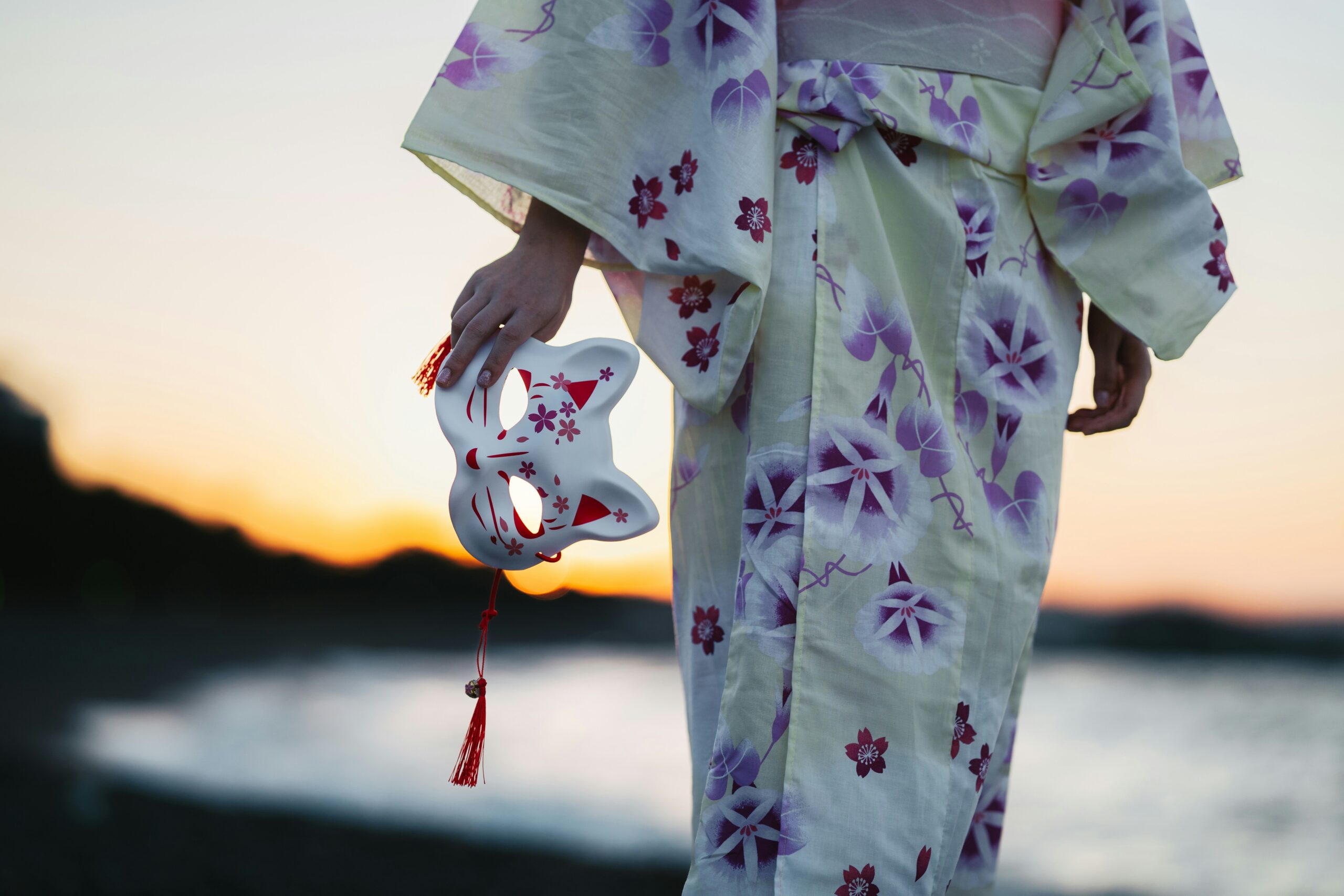
When most travelers think of kimono photography in Kyoto, they immediately envision the crowded bamboo groves of Arashiyama or the tourist-packed streets of Gion. While these locations are undeniably beautiful, they’re often so crowded that capturing that perfect, serene kimono moment becomes nearly impossible. What if we told you that Kyoto harbors dozens of hidden gems where your kimono photography can shine without the crowds?
These lesser-known locations offer the same traditional Japanese aesthetic, often with even more authentic charm and significantly fewer tourists competing for the perfect shot.
- Why Location Matters for Kimono Photography
- The Secret Gardens of Northern Kyoto
- Historic Districts Beyond the Tourist Trail
- Traditional Japanese Cultural Elements
- Seasonal Considerations for Perfect Timing
- Photography Techniques for Each Location
- Professional Photography Services in Kyoto
- Cultural Considerations and Etiquette
- Planning Your Photography Route
- Advanced Photography Concepts
- Creating Lasting Memories
- Ready to Capture Stunning Kimono Photography?
Why Location Matters for Kimono Photography
The art of kimono photography isn’t just about the garment itself – it’s about creating harmony between the wearer, the clothing, and the environment. Traditional Japanese aesthetics emphasize the concept of “wa” (harmony), where every element works together to create a unified, beautiful whole. Choosing the right location can transform a simple kimono photo into a work of art.
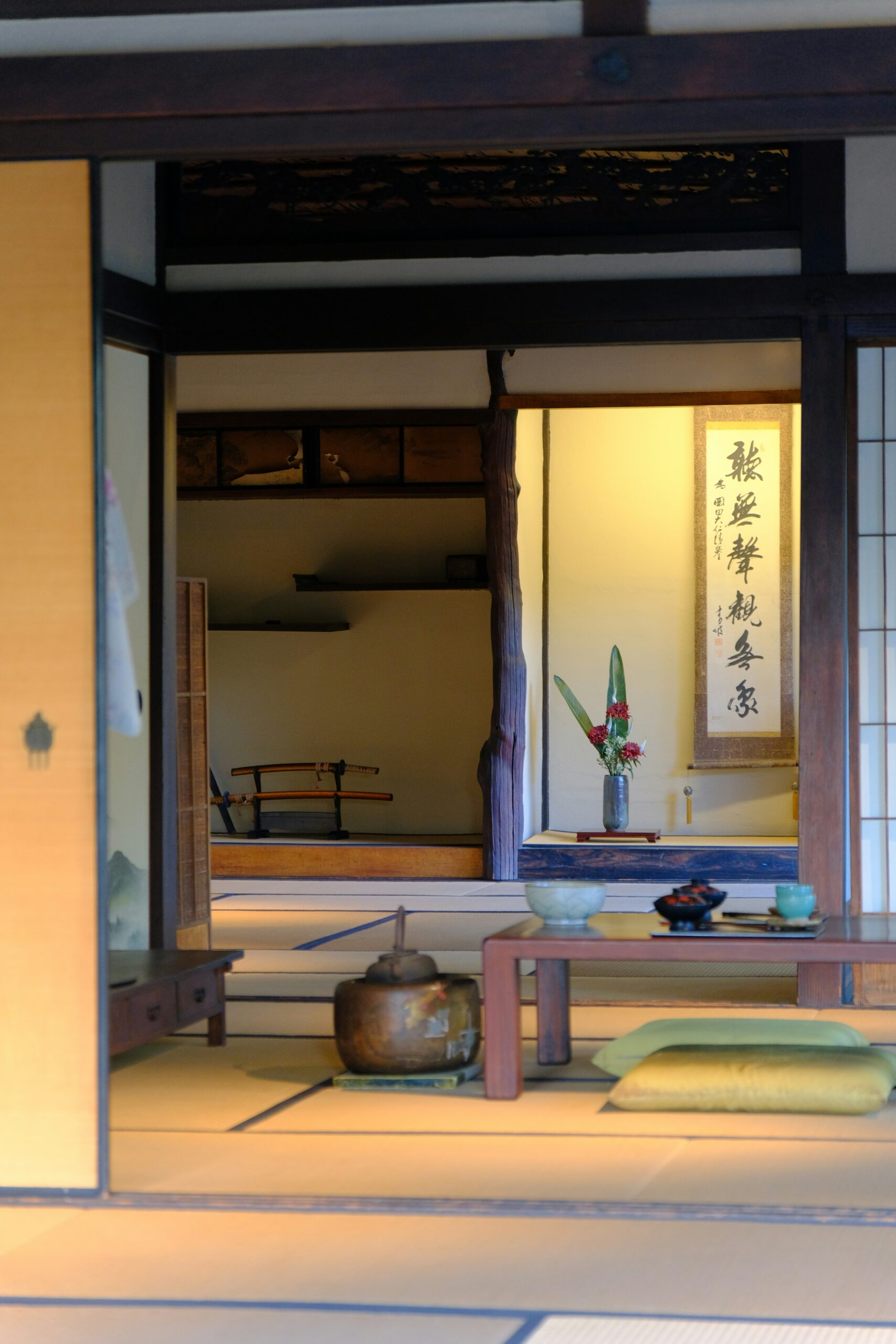
The background, lighting, architectural elements, and natural surroundings all contribute to telling a story that honors both the wearer and Japan’s rich cultural heritage. Professional photographers understand that the most striking kimono images often come from locations that feel authentic and undisturbed. These hidden spots in Kyoto offer exactly that – authentic Japanese beauty without the modern distractions that can detract from your photos.
The Secret Gardens of Northern Kyoto
Shisen-do Temple: A Poet’s Paradise
Tucked away in the northern hills of Kyoto, Shisen-do Temple represents one of the city’s best-kept photography secrets. Built in 1641 by the warrior-poet Ishikawa Jozan, this temple features meticulously maintained gardens that change dramatically with each season.
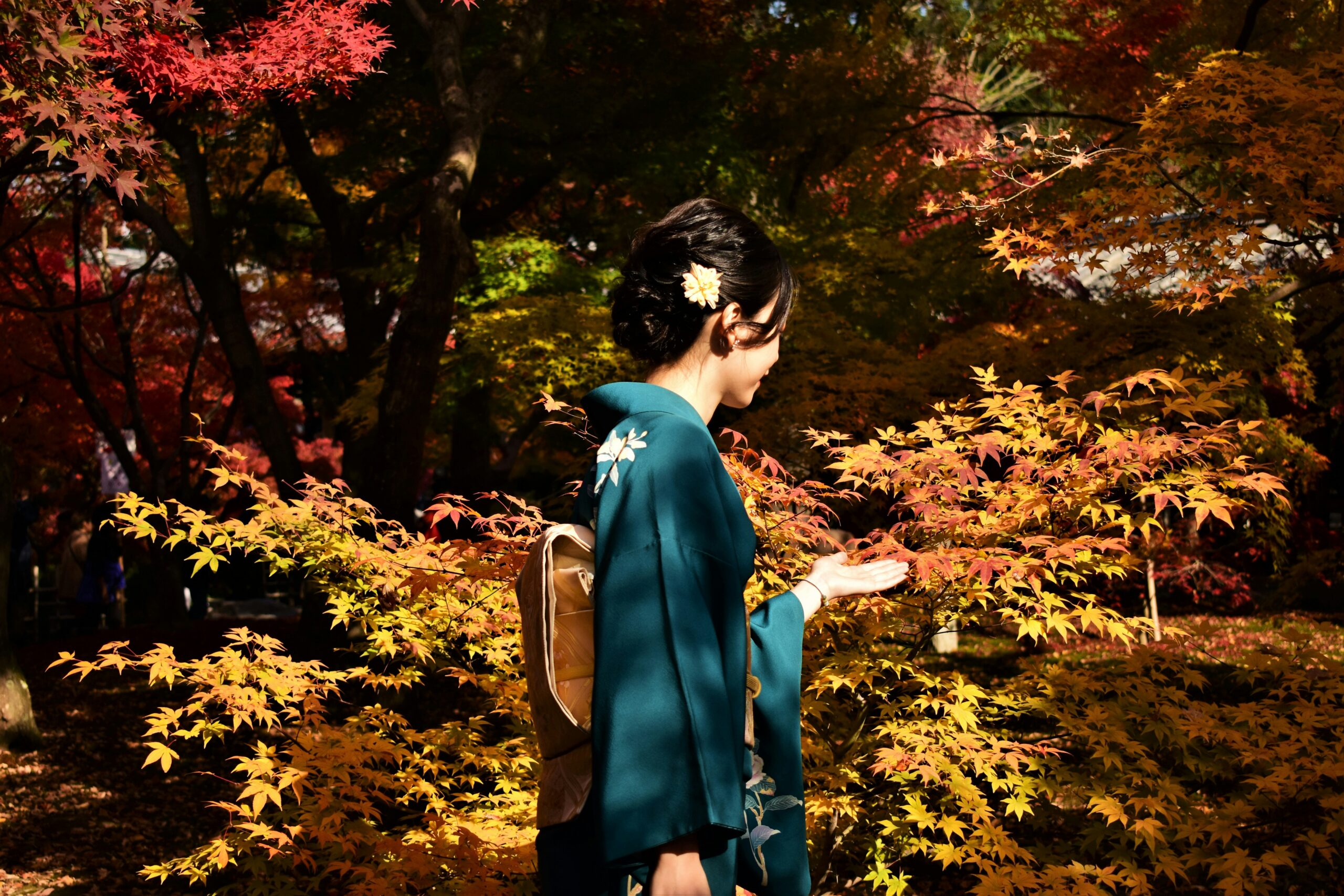
The temple’s approach path, lined with ancient stone lanterns and maple trees, creates a natural corridor perfect for kimono photography. During autumn, the contrast between vibrant red maple leaves and a deep blue or burgundy kimono creates stunning visual drama. The stone steps leading to the main hall provide natural leading lines that draw the eye to the kimono-clad subject.
What makes Shisen-do particularly special is its famous “shishi-odoshi” (bamboo water feature) that creates a gentle, rhythmic sound throughout the grounds. This ambient soundtrack adds an extra dimension to video content and helps create a meditative atmosphere during photo shoots.
Kompuku-ji Temple’s Hidden Bamboo Grove
While everyone flocks to Arashiyama’s bamboo forest, few know about the smaller but equally magnificent bamboo grove at Kompuku-ji Temple. This hidden gem offers all the mystical beauty of towering bamboo without the crushing crowds.
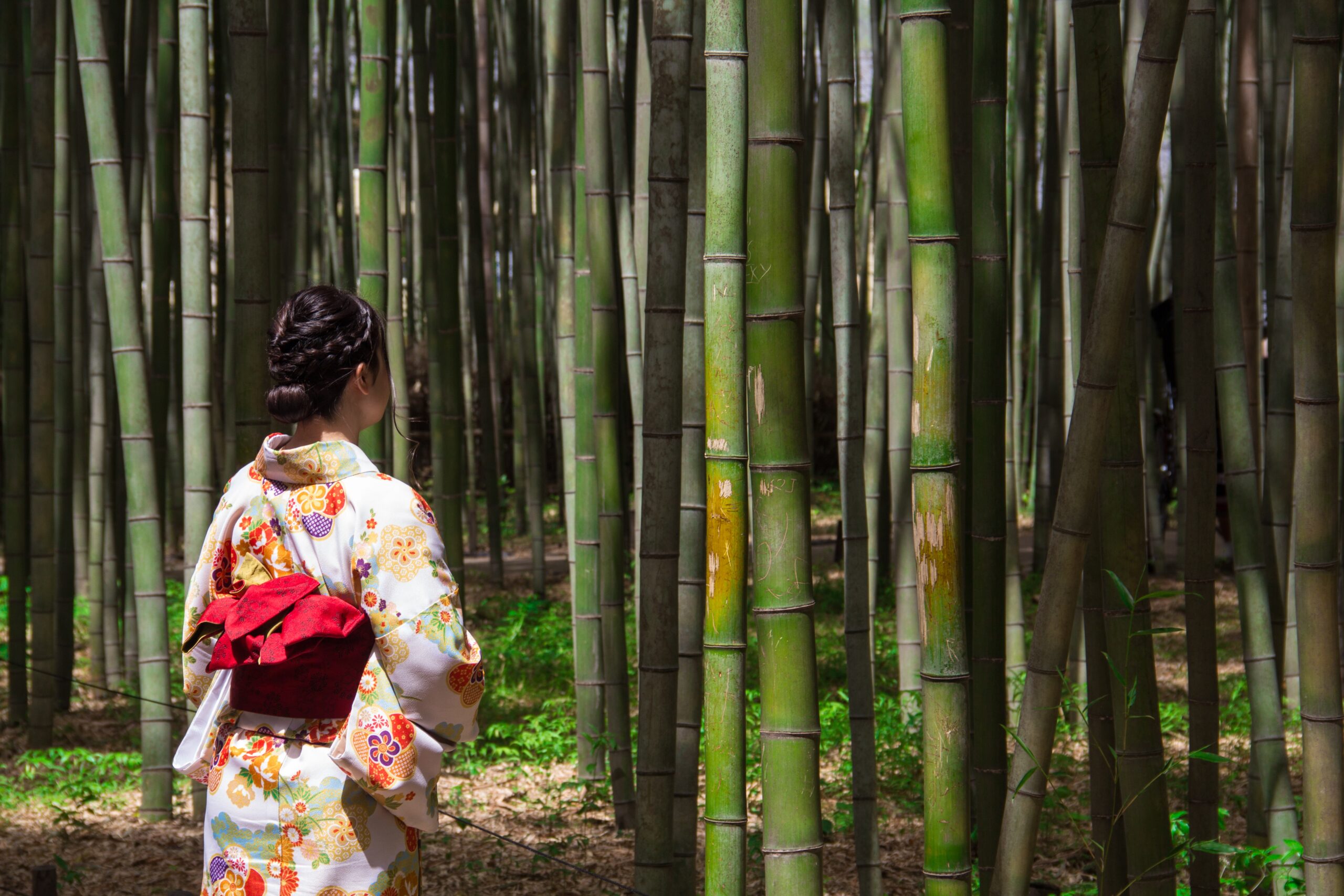
The grove’s natural lighting creates perfect conditions for kimono photography throughout the day. Morning light filters through the bamboo canopy, creating dappled shadows that add depth and mystery to photographs. The uniform green background allows kimono colors to pop dramatically, whether you’re wearing traditional muted tones or more vibrant contemporary designs.
Historic Districts Beyond the Tourist Trail
Pontocho Alley’s Northern Extension
Most visitors to Pontocho Alley never venture beyond the restaurant-lined section near the Kamogawa River. However, the northern extension of this historic district offers incredible opportunities for kimono photography in a truly authentic setting.
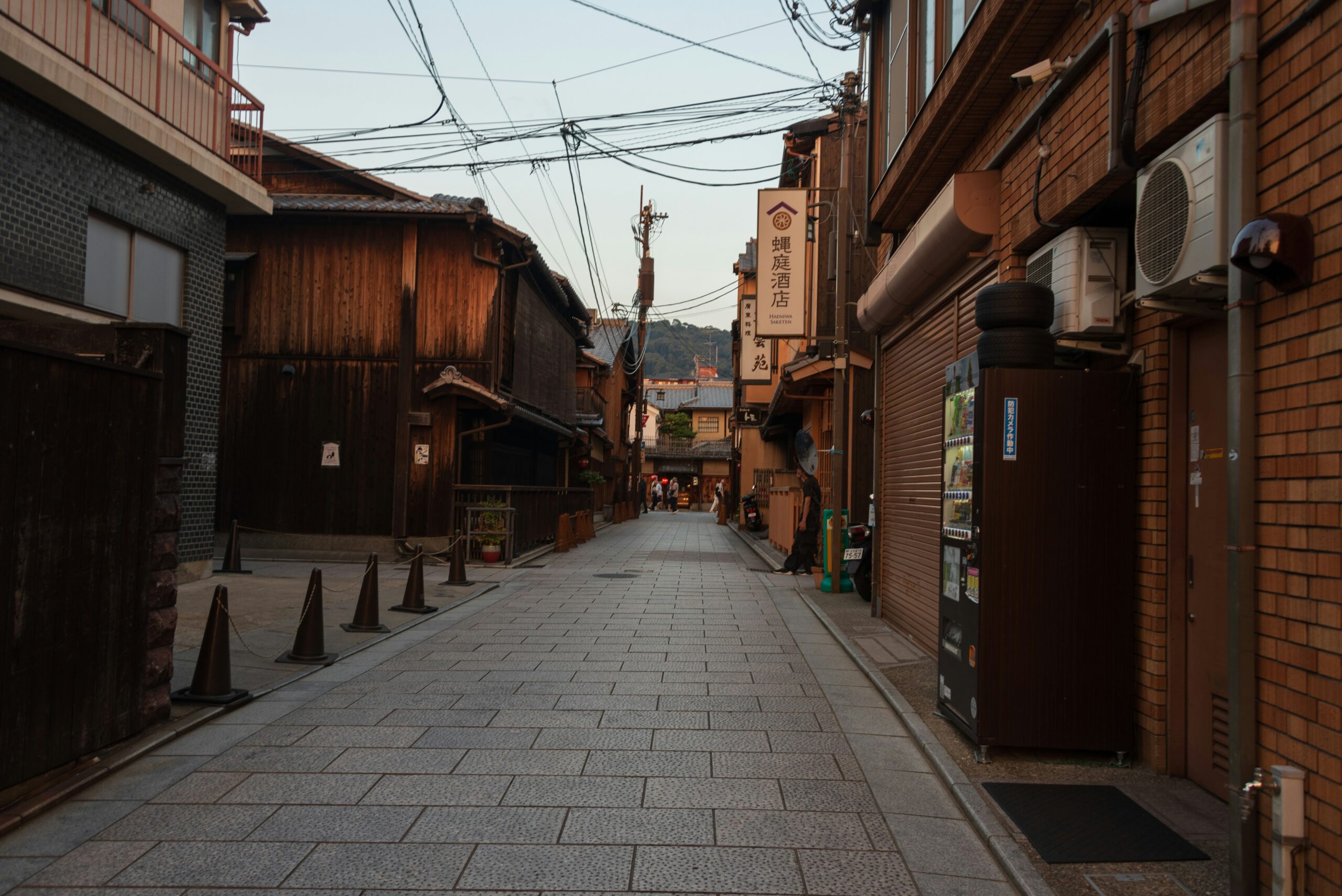
The narrow stone pathways and traditional wooden buildings create an intimate atmosphere that feels like stepping back in time. Early morning hours (before 8 AM) offer the best opportunities to photograph here without interruption, as most restaurants and tea houses don’t open until later in the day.
The architectural details in this area – from ornate wooden balconies to traditional roof tiles – provide rich backgrounds that complement the intricate patterns and textures of kimonos. The play of light and shadow created by the narrow alleyways adds dramatic depth to photographs.
Traditional Japanese Cultural Elements
Understanding and incorporating traditional Japanese cultural elements can significantly enhance your kimono photography. From ceremonial umbrellas to temple architecture, these elements provide authentic context that elevates your images beyond simple portraits.
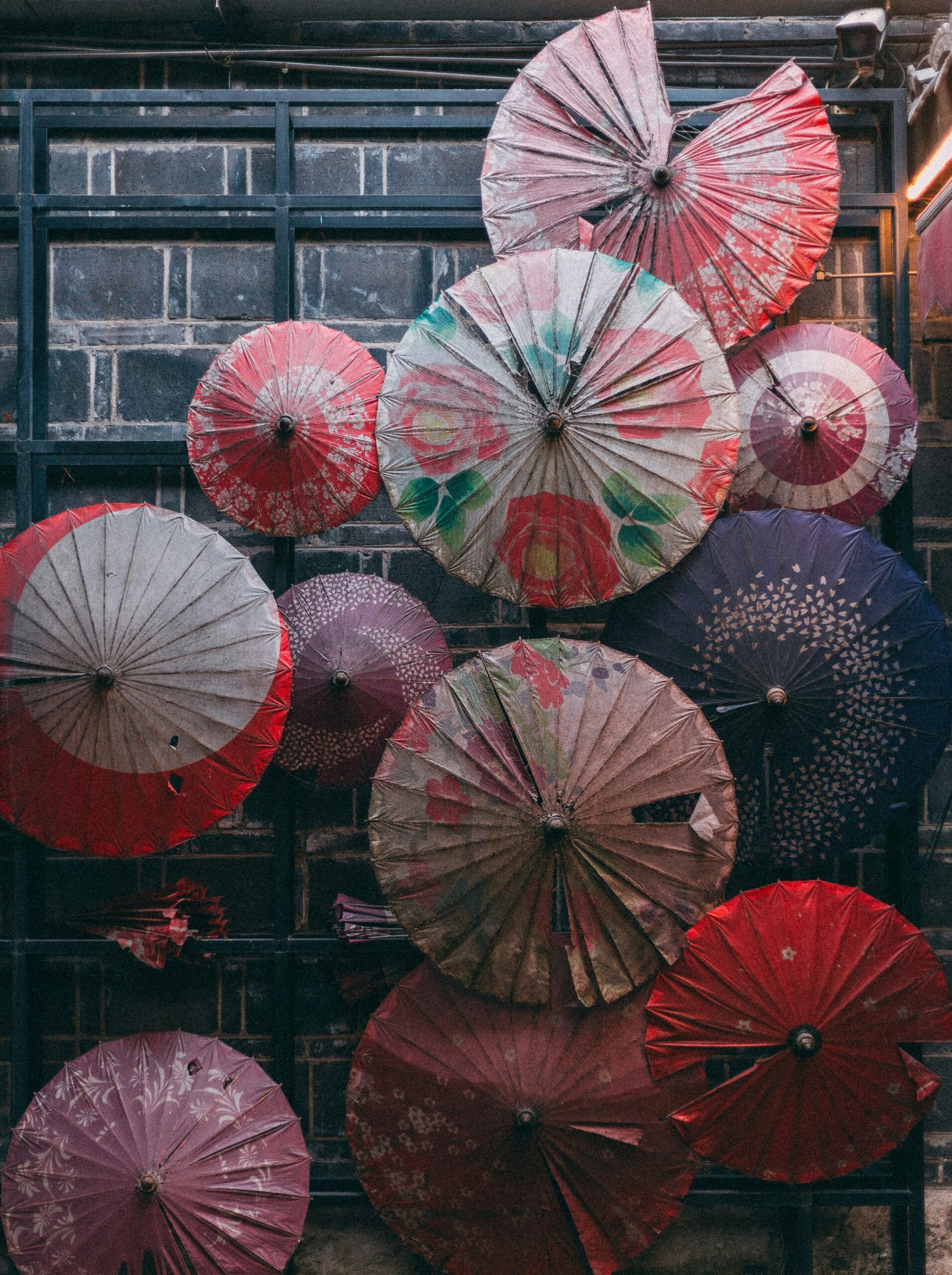
Traditional props like wagasa (Japanese paper umbrellas) not only provide cultural authenticity but also serve practical purposes in photography. They can create interesting shadows, add color contrast, and provide protection from sun or light rain during outdoor shoots.
Seasonal Considerations for Perfect Timing
Spring: Cherry Blossom Alternatives
Instead of fighting crowds at Maruyama Park or Yoshino-yama, consider these lesser-known cherry blossom locations that provide equally stunning backdrops for kimono photography:
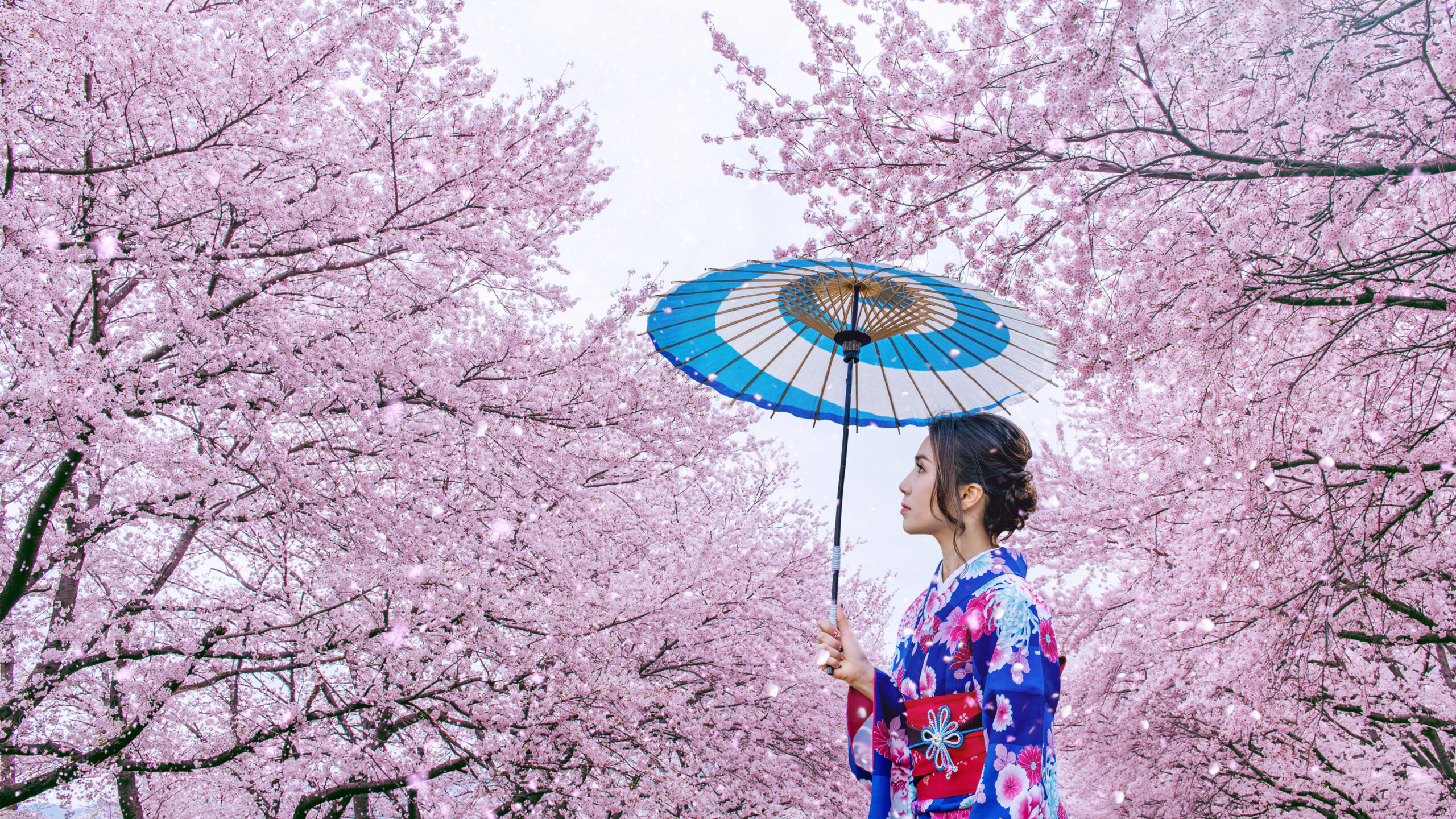
**Daigo-ji Temple’s Upper Grounds**:
While the lower temple grounds can get crowded, the upper mountain area features ancient cherry trees and offers panoramic views of Kyoto. The hiking path is lined with various cherry varieties that bloom at slightly different times, extending the photography season.
**Kyoto Imperial Palace Park’s Northern Section**:
The northern areas of this large park feature several cherry groves that remain relatively quiet even during peak bloom. The wide-open spaces allow for dramatic wide-angle shots that capture both the kimono and the sea of cherry blossoms.
**Kurama-dera Temple Approach**:
The mountain path leading to Kurama-dera features wild cherry trees interspersed with forest growth, creating a more natural, less manicured look that can add authenticity to kimono photos.
Summer: Green Sanctuaries
Summer in Kyoto can be intensely hot, making location choice crucial for comfortable kimono photography sessions. These shaded locations provide relief from the heat while offering lush green backdrops:
Sanzen-in Temple, Ohara: Located in the cooler mountain area north of Kyoto, this temple features moss gardens and ancient trees that create a naturally air-conditioned environment perfect for summer kimono photography.
Ginkaku-ji Temple’s Upper Gardens: While the lower temple grounds can be crowded, the upper garden paths offer shaded walking areas with mountain views and traditional garden elements.
Kyoto Botanical Garden’s Japanese Section: The traditional Japanese garden within the botanical garden features water elements, bridges, and carefully planned sight lines that work beautifully for kimono photography while providing respite from summer heat.
Autumn: Beyond the Maple Crowds
Autumn might be the most popular season for kimono photography, but these locations offer spectacular fall colors without the typical crowds:

Bishamon-do Temple: This temple features a stunning approach lined with maple trees that create a natural tunnel of autumn colors. The stone steps and traditional architecture provide perfect elements for layered compositions.
Kyoto University Campus: The historic campus features several traditional buildings surrounded by mature trees that turn brilliant colors in autumn. The academic atmosphere adds an interesting contemporary element to traditional kimono photography.
Maruyama Park’s Eastern Hills: While the main park areas get crowded, the eastern hillside paths offer elevated views of the city with foreground elements of autumn foliage.
Photography Techniques for Each Location
Working with Natural Light
Understanding how natural light interacts with different locations throughout the day is crucial for successful kimono photography. Each hidden location in Kyoto offers unique lighting opportunities that can enhance your images dramatically.
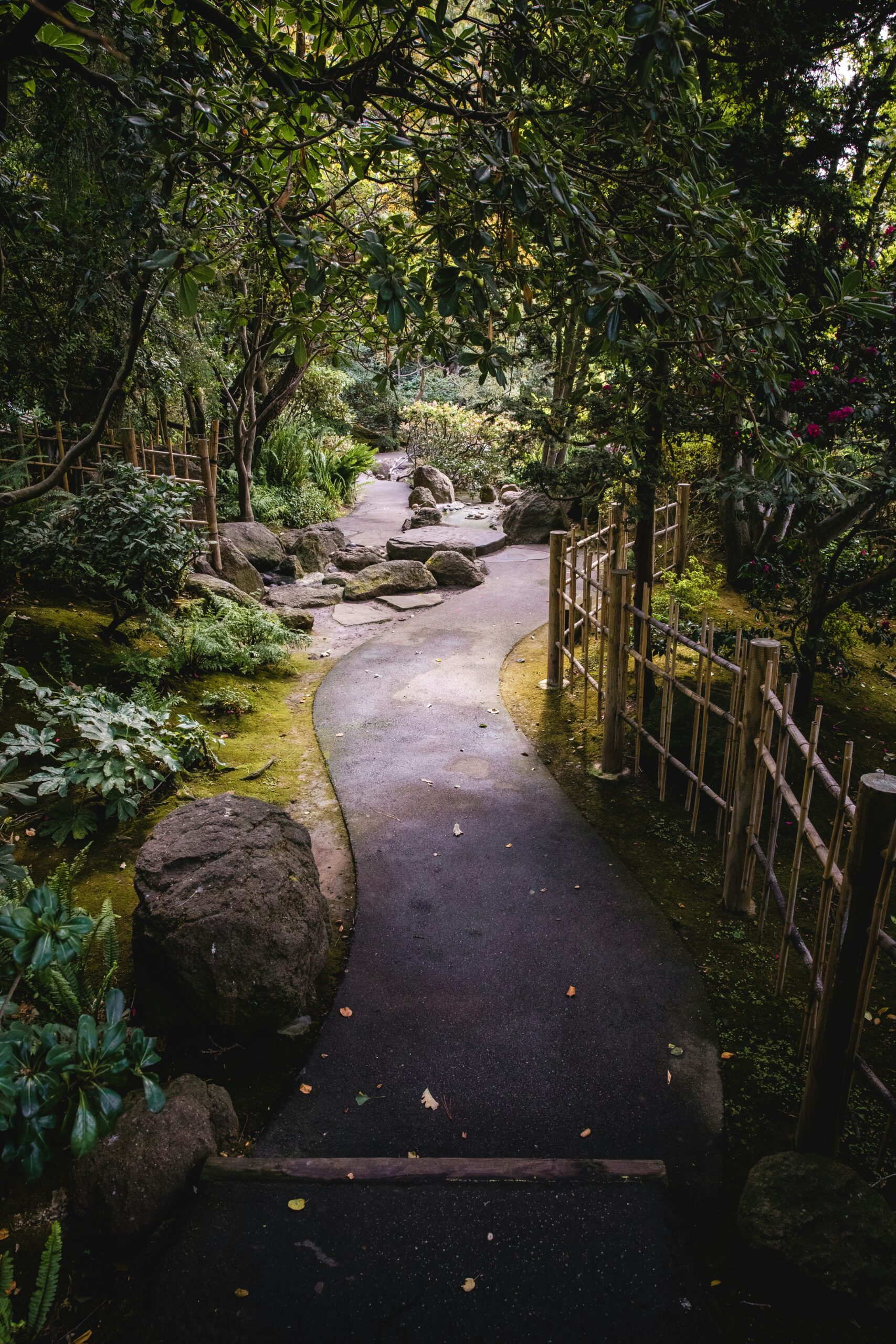
Golden Hour Magic: The hour after sunrise and before sunset provides warm, soft light that complements the rich colors and textures of traditional kimonos. In narrow alleyways and temple grounds, this light often bounces off stone and wooden surfaces, creating a natural fill light that eliminates harsh shadows.
Overcast Advantage: Don’t dismiss cloudy days for kimono photography. Overcast skies act as a giant softbox, providing even, flattering light that brings out the subtle details in kimono fabric patterns without creating harsh contrasts.
Shade Photography: Many of Kyoto’s hidden locations feature natural shade from buildings, trees, or temple structures. This shade provides consistent lighting that’s particularly flattering for portrait-style kimono photography.
Composition Techniques
Rule of Thirds with Cultural Elements: When photographing in these hidden Kyoto locations, use traditional architectural elements like temple posts, garden paths, or bamboo stalks to create natural grid lines that enhance composition while honoring Japanese aesthetic principles.
Framing with Architecture: Traditional Japanese architecture provides natural frames for kimono photography. Doorways, windows, and garden gates can create intimate compositions that draw focus to the kimono while providing cultural context.
Leading Lines: Stone pathways, bamboo groves, and temple corridors create natural leading lines that guide the viewer’s eye toward the kimono-clad subject. These lines often follow traditional Japanese design principles that emphasize harmony and flow.
Professional Photography Services in Kyoto
For those seeking professional results, working with experienced kimono photographers can elevate your experience from simple tourist photos to artistic cultural documentation. Professional photographers familiar with these hidden locations understand the optimal timing, lighting, and cultural considerations that create truly memorable images.
When selecting a photography service, look for professionals who demonstrate respect for Japanese culture, understand the significance of kimono traditions, and have experience working in less touristy locations. Many professional services also provide assistance with kimono selection and styling, ensuring that your choice complements both your personal aesthetic and the chosen location.
For professional kimono photography services in these hidden Kyoto locations, visit AllPhoto Kyoto – specialists in capturing authentic Japanese beauty away from the tourist crowds.
Cultural Considerations and Etiquette
Respecting Sacred Spaces
Many of these hidden locations are active religious sites or culturally significant spaces that deserve respectful treatment. Understanding proper etiquette ensures that these locations remain accessible for future visitors while honoring their spiritual and cultural importance.
Temple Etiquette: Before photographing at any temple, check with staff about photography policies. Some areas may be restricted, while others may require small donations or fees. Always bow respectfully at temple gates and maintain quiet, respectful behavior throughout your visit.
Shrine Protocols: Shinto shrines have specific purification rituals at entrance gates. Participate respectfully in these brief ceremonies, and avoid photographing people engaged in prayer or religious activities without permission.
Private Property Respect: Some hidden locations may be on or adjacent to private property. Always respect posted signs, stay on designated paths, and avoid disturbing local residents or business operations.
Kimono Wearing Considerations
Proper Fit and Style: Ensure your kimono is properly fitted and styled according to traditional standards. Improperly worn kimonos can be considered disrespectful and may attract unwanted attention or criticism from locals.
Seasonal Appropriateness: Different kimono styles and fabrics are appropriate for different seasons. Wearing seasonally inappropriate kimono can mark you as a tourist and may be considered culturally insensitive.
Movement and Posture: Traditional kimono requires modified movement and posture. Practice walking, sitting, and posing in kimono before your photography session to ensure natural, graceful movement that honors the garment’s traditional purpose.
Planning Your Photography Route
Efficient Location Sequencing
Planning an efficient route through these hidden locations can maximize your photography opportunities while minimizing travel time and tourist crowds. Consider grouping locations by geographic area and optimal timing for lighting conditions.
Northern Route: Combine Shisen-do Temple, Kompuku-ji’s bamboo grove, and the Philosopher’s Path side streets in a single day. Start early at Shisen-do for morning light, move to the bamboo grove for midday shade, and finish along the Philosopher’s Path for afternoon golden hour lighting.
Central Historic Route: Focus on Pontocho Alley’s northern extension and nearby hidden temples. This route works well for shorter sessions and can be combined with cultural activities like traditional tea ceremonies or kimono shopping.
Seasonal Specialty Routes: Plan specific routes based on seasonal highlights. Spring routes might focus on lesser-known cherry blossom locations, while autumn routes emphasize hidden maple viewing spots.
Timing Considerations
Crowd Avoidance: Most hidden locations are busiest between 10 AM and 4 PM. Plan photography sessions for early morning (before 9 AM) or late afternoon (after 5 PM) for the most peaceful experience.
Seasonal Peak Avoidance: Even hidden locations can become crowded during peak seasons like cherry blossom time and autumn color season. Consider visiting during shoulder seasons for the most authentic experience.
Weather Contingency: Have indoor alternatives planned for each location in case of rain or extreme weather. Many temples and traditional buildings offer covered areas suitable for kimono photography.
Advanced Photography Concepts
Storytelling Through Images
The best kimono photography tells a story that connects the viewer to Japanese culture and the individual wearing the kimono. These hidden locations provide rich narrative opportunities that go beyond simple portrait photography.
Cultural Narrative: Use architectural elements, seasonal changes, and traditional objects to create images that tell the story of Japanese cultural continuity and the kimono’s place within that tradition.
Personal Journey: Document the experience of wearing kimono in authentic settings, capturing not just posed portraits but candid moments of discovery, reflection, and cultural engagement.
Environmental Integration: Show how kimono and wearer interact with the traditional Japanese environment, emphasizing harmony between human, clothing, and architectural/natural elements.
Creating Lasting Memories
The ultimate goal of kimono photography in these hidden Kyoto locations extends beyond creating beautiful images. It’s about connecting with Japanese culture, understanding traditional aesthetics, and creating personal memories that honor both the photographer and the rich cultural heritage of Japan’s ancient capital.
These hidden locations offer opportunities for authentic cultural engagement that goes far beyond typical tourist experiences. By approaching kimono photography with respect, preparation, and artistic vision, visitors can create meaningful documentation of their cultural journey while contributing to the preservation and appreciation of Japan’s traditional heritage.
The photographs created in these locations become more than simple souvenirs – they become personal artifacts that connect the photographer to centuries of Japanese cultural tradition and artistic excellence. Each image captures not just a moment in time, but a connection to the ongoing story of Japanese culture and the timeless beauty of traditional dress in authentic settings.
Whether you’re a professional photographer seeking authentic cultural documentation or a traveler looking to create meaningful memories of your Japanese cultural experience, these hidden locations in Kyoto offer opportunities for truly spectacular kimono photography that honors both the art form and the cultural heritage it represents.
Ready to Capture Stunning Kimono Photography?
Ready to capture stunning kimono photography in Kyoto’s hidden gems? Visit AllPhoto Kyoto for professional photography services that specialize in authentic, culturally-respectful kimono photography at these secret locations throughout Japan’s ancient capital.


コメント